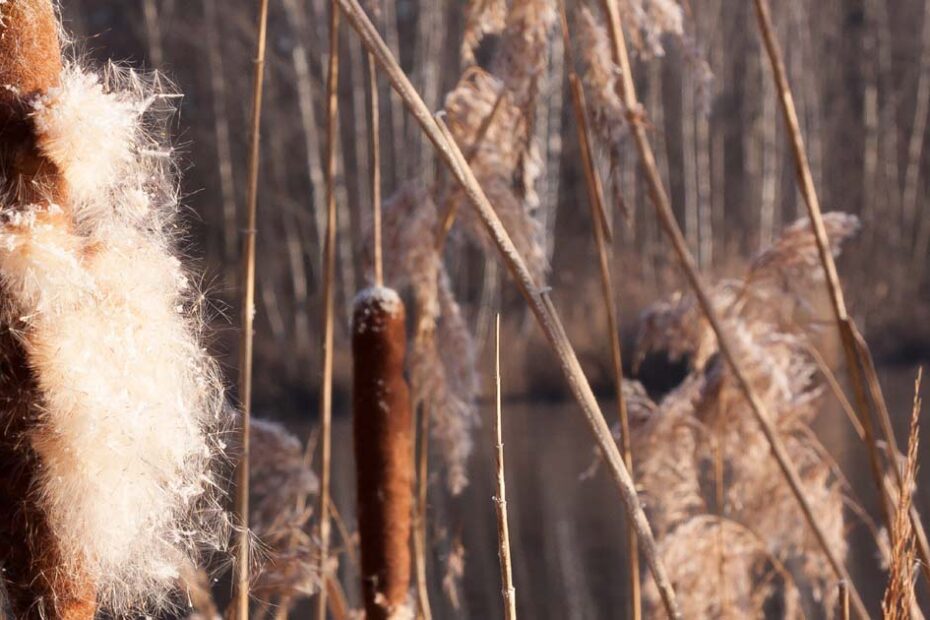[ad_1]
Tinder is a dry, highly flammable material used to start a fire. Generally, wood the thickness of a pencil lead is used as a tinder and lit with matches or a lighter.
Why Good Tinder is Essential
When making a fire in ideal conditions – such as with dry wood and a lighter – you can get away with sub-par tinder. The large flame from a lighter will eventually ignite the sticks, and (assuming you set up your fire correctly), you will get a fire going.
But what about making a fire with wet wood or when making a fire with a Ferro rod?
The choice of tinder will make a big difference in whether you succeed in making a fire. If you find yourself in a wilderness survival situation, a fire could mean the difference between freezing your butt off or not being able to purify water by boiling it.
This guide goes over everything you need to know about tinder for fire-starting, plus DIY tinder (firestarters) and tinder you can find in nature.
How Much Tinder Do You Need?
The general rule is to make a circle with both hands. You should gather enough tinder to fill this circle.
If it is wet out or you are using sparks to ignite your fire, then get a heck of a lot more tinder than this. Nothing is more frustrating (especially when you are cold and hungry) than watching your flame die out because you didn’t have enough tinder to light the kindling.
*What about kindling and fuel wood?
Kindling should be able to fill a circle made with both arms. As for fuel wood, remember the adage:
“There are those who warm themselves around a small fire and those who warm themselves gathering wood for a large fire.”
Even though many survivalists recommend bringing a survival axe into the wilderness, don’t use it for cutting firewood.
If you cut wood from a tree, the wood will still be alive and thus wet inside. It will not burn. All you will get is nasty smoke. Plus, you’ll be the jerk that chopped a tree.
Unless it’s a survival situation, leave no trace.
Choosing Tinder for Firestarting with Sparks (Match-less Methods)
I always carry a waterproof lighter as part of my Every Day Carry essentials – you can see our favorite survival lighters here. This makes it very easy to ignite tinder, even if it’s damp.
I also keep a Ferro rod with me as a backup. These do take a bit of practice to use. Unlike with matches or a lighter, Ferro rods will only produce SPARKS. There will be no flame.
Making a fire out of sparks is very tricky. Unless the sparks land on something VERY DRY and VERY FLUFFY, the sparks will die out before the tinder ignites.
The tinder, which works for matches, won’t work for a Ferro rod. Nor will it work for a bow drill, magnifying glass, or any other method of starting a fire without matches.
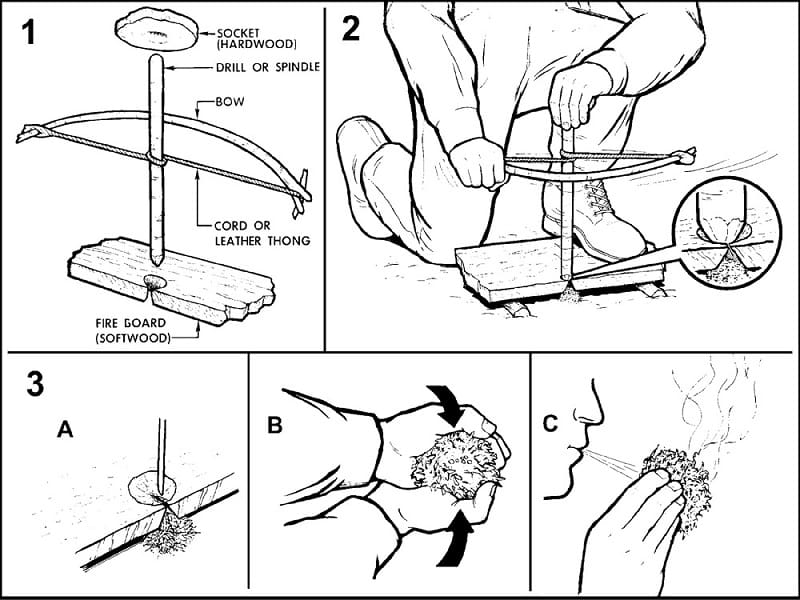
Best Homemade/Bring-with-You Tinder
If you’ve thought ahead, you can bring along tinder (also called firestarters). Some of my favorite ones include:
- Toilet Paper: This is what I usually use for tinder while camping since I already have it on me. You can shred the TP, so it is fluffier and lights with a spark easier.
- A cotton ball coated with petroleum jelly: You can wrap it in tinfoil and cut an X into the foil packet, peel back the foil to reveal the cotton ball, and light it.
- Dryer lint: Also works better if dipped in petroleum jelly
- Teabag dipped in wax
- Jute string match: Gather several strands of it and unravel the ends. See how to make them here.
- Steel wool #000: This also works well if you are starting a fire with a battery. Just touch the steel wool to both ends of the battery, and it will light on fire.
- Corn chips (Bugles, Doritos, Fritos…): These light up nicely. It makes you question whether you want to eat them, though! 😉
- Esbit tablets: These are made for Esbit stoves and burn for a long time.
- Hand sanitizing wipes: This only works if the wipes have a high amount of alcohol in them. Even though they are wet, they can still ignite with just a spark.
- Chapstick: To make this work, you will need to rub it on a piece of string or dried grass. Then the string or grass will burn easier and longer.
- Char cloth: More on how to make this below.
*Remember to store your tinder in a waterproof container. Altoids tins or zip lock bags are usually adequate. Some medication containers are also waterproof.
If you are serious about keeping your gear dry, then get a waterproof backpack, aka dry sack.
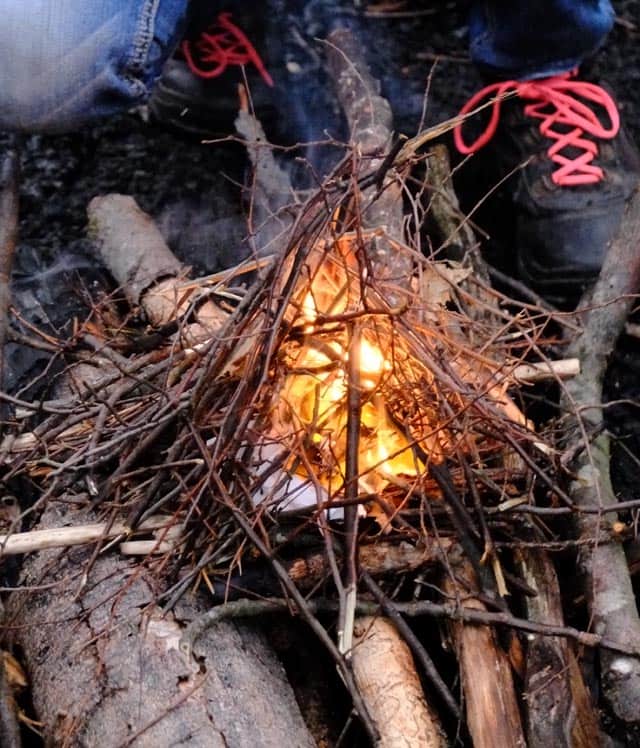
Natural Tinder
These are options for tinder that you can find in nature. Just be warned that it’s often difficult to get them lit in winter or damp situations.
- Wood scrapings: First, shave off the bark on a branch to get to the dry wood inside. Hold your knife blade at a 90-degree angle and start scraping. You’ll get tiny flakes of wood that ignite easily (just one more reason to bring a survival knife!).
- Feather stick: Start by shaving off the bark on a branch. Then use your knife to shave thin strips of wood. Leave these strips attached to the branch. You’ll end up with a stick that looks like a feather. Again, you’ll need a good knife for this.
- White birch bark, torn or cut into thin strips – read about more uses for the birch tree
- Bark from other trees with paper-like bark: Often, the inner bark of trees is thinner and strip-like
- Punk wood: This refers to the wood from a dead tree. It will be so decayed that it resembles Styrofoam and crumbles in your hand easily. Finding dry punk wood can be difficult, though, as it retains a lot of moisture.
- Fatwood: Fatwood comes from the inside of a coniferous tree that has been cut. The resin inside of the wood hardens. Since coniferous trees contain terpene, which is highly flammable, it ignites easily.
- Cattail: Use the dry, fluffy part of the plant
- Dandelion fluff
- Poplar cotton fluff
- Milk thistle pods: The pods dry up at the end of summer and leave you with dry fluff
- Tree sap
- Chaga fungus: It is often called “tinder fungus” because it is so flammable. Read more here.
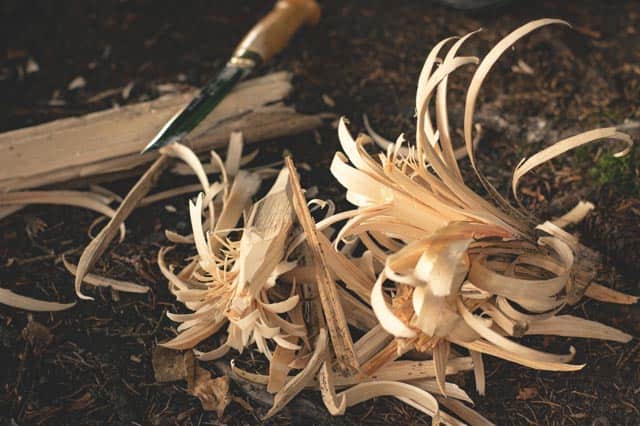
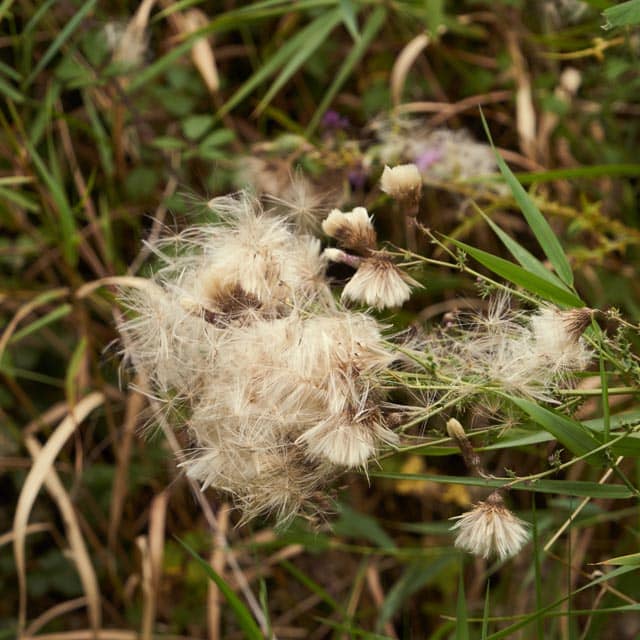
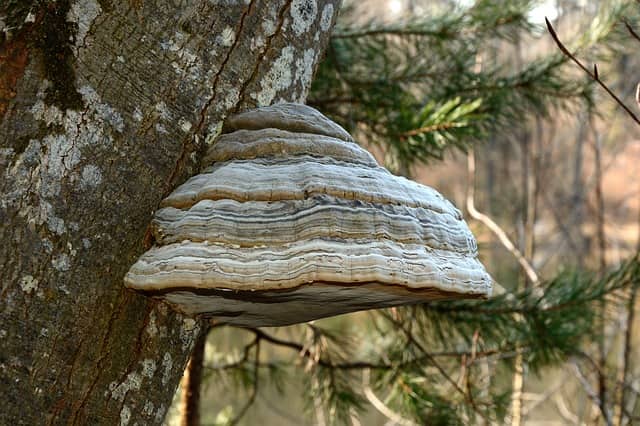
What about pine needles, dead leaves, and dry grass?
All of these things seem like they’d be suitable for tinder. However, often they smolder instead of igniting into a flame. This is incredibly frustrating.
Plus, these are probably a lot wetter than you think. Even if they seem dry, they retain a lot of moisture — which means they will smolder instead of bursting into flame.
That doesn’t mean you can’t use these as tinder. To get the best results:
- Use them with other types of tinder: Layer them underneath the tinder, which will make a good flame, such as cottonwood or cattail fluff. This flame will then light the needles/leaves/grass.
- Make a bird’s nest out of grass: Grass is more likely to catch on fire if you put it in a circular shape. In the middle of this “nest,” put some other fluffy tinder that will ignite.
- Break pine needles: Breaking the pine needs in half (which will make them split down the middle a bit) increases surface area and gets better results.
Making a Char Cloth
Char cloth is 100% cotton which has been turned into charcoal. Charcoal ignites to produce a hot ember very easily.
You can easily make your own char cloth from a piece of old t-shirt. The Catch 22 here is that you need fire to make char cloth. In a wilderness survival situation, you’ll have to get the first fire going with whatever tinder you find. Use this fire to make your char cloth, and you’ll be able to make future fires with the char cloth easily.
For detailed instructions, see this post about how to make char cloth.
What’s your favorite tinder? Let us know in the comments!
[ad_2]
Source link
